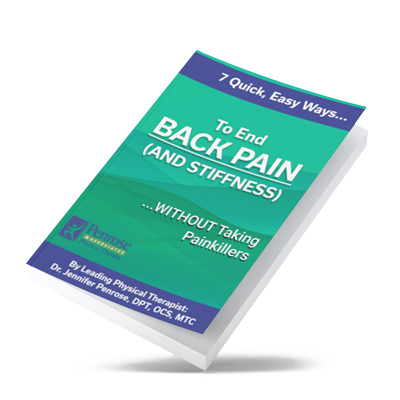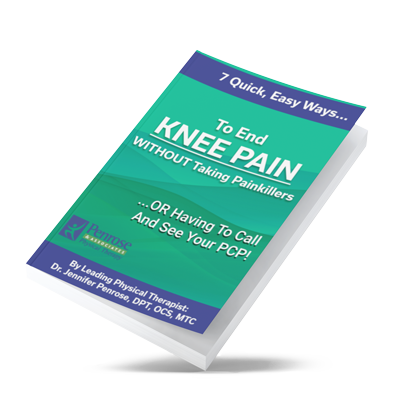For many of us, our joints seem to bend and twist in ways nature never intended. While party tricks like touching our elbows to knees or contorting into pretzel shapes might impress onlookers, living with hypermobility is far from a circus act. This condition, characterized by an increased range of motion in joints, often comes with a hidden cost: chronic pain.
Demystifying Hypermobility
Let’s begin by getting to know this mysterious condition. Hypermobility simply means having joints that move beyond the typical range of motion. There are different types, including:
Generalized joint hypermobility (HJHS): This is the most common type, affecting multiple joints throughout the body.
Ehlers-Danlos syndromes (EDS): These are a group of genetic conditions that involve connective tissue abnormalities, often leading to hypermobility.
Hypermobile type of Marfan syndrome: This syndrome affects connective tissue and the skeletal system, and hypermobility can be one of its features.
Understanding the cause of your hypermobility can be helpful in managing your pain. In most cases, the exact cause is unknown, but it’s thought to be related to a combination of genetic and environmental factors. For example, people with certain genes may be more predisposed to having loose joints, while factors like childhood activities or sports participation can also play a role.
The Painful Truth – Understanding Hypermobility-Related Pain
Now, let’s address the elephant in the room: pain. Unfortunately, the increased flexibility that comes with hypermobility often leads to joint instability and pain. This is because our joints rely on a delicate balance of muscles, ligaments, and tendons for support. When these structures are stretched beyond their normal range, they can become inflamed and irritated, leading to pain.
There are different types of pain associated with hypermobility, including:
Aching pain: This is a dull, persistent pain that can occur in any joint affected by hypermobility.
Sharp pain: This is a sudden, intense pain that can be caused by a joint dislocation or subluxation (partial dislocation).
Referred pain: This is pain that is felt in a different area than the source of the problem. For example, pain in your knee might be referred from your hip.
It’s important to be able to differentiate between “good” and “bad” flexibility. While some degree of flexibility is important for healthy movement, excessive flexibility can actually be detrimental. If you find that your joints are frequently dislocating or subluxating, or if you’re experiencing chronic pain, it’s important to seek professional help.
Recognizing and Preventing Pain
The first step to managing hypermobility-related pain is to become more aware of your body. Pay attention to your pain signals and learn to recognize your limits. Here are some tips:
Keep a pain diary: Track your pain levels, location, and triggers to identify patterns.
Warm up before and cool down after activities.
Avoid activities that exacerbate your pain.
Practice good posture.
Listen to your body and take breaks when you need them.
By being proactive and mindful of your body, you can often prevent pain flares before they start.
Building Strength and Stability
While it might seem counterintuitive, exercise is actually one of the best ways to manage hypermobility-related pain. Strengthening the muscles around your joints can help to provide them with additional support and stability. However, it’s important to choose the right exercises to avoid further injury. Here are some tips:
Focus on core and surrounding muscle strengthening. Pilates and yoga can be great options, but be sure to modify the exercises to suit your needs.
Choose low-impact activities like swimming, cycling, or walking.
Work with a physiotherapist or occupational therapist to develop a safe and effective exercise program.
Remember, it’s important to start slowly and gradually increase the intensity of your workouts as you get stronger.
Approaches to Pain Management
While exercise plays a crucial role in managing hypermobility pain, a holistic approach that incorporates various mind-body and lifestyle strategies can optimize your relief and overall well-being.
Mind-Body Connection:
Our mental and emotional state can significantly impact our perception and experience of pain. Techniques like:
Mindfulness meditation: Focuses on the present moment without judgment, reducing stress and pain perception.
Cognitive behavioral therapy (CBT): Helps identify and modify negative thought patterns that can exacerbate pain.
Biofeedback: Teaches you to control your body’s response to stress and pain through relaxation techniques.
These practices can empower you to break the pain cycle and find inner peace alongside physical relief.
Alternative Therapies:
Explore complementary therapies that can complement your pain management plan:
Acupuncture: Stimulates specific points on the body to promote healing and pain relief.
Massage therapy: Relaxes muscles, improves circulation, and reduces pain.
Hot and cold therapy: Applying heat before activity and ice afterwards can manage inflammation and muscle soreness.
Remember, consult your healthcare provider before trying any new therapy, especially if you have any underlying health conditions.
Nutrition and Sleep:
Fueling your body with nutritious foods and prioritizing quality sleep are vital for pain management and overall health.
Focus on anti-inflammatory foods: Include fruits, vegetables, whole grains, and healthy fats in your diet.
Limit processed foods, sugar, and unhealthy fats: These can exacerbate inflammation and worsen pain.
Aim for 7-8 hours of quality sleep each night: Sleep deprivation can increase pain sensitivity.
Assistive Devices and Support:
Don’t hesitate to utilize tools and resources that can make daily life easier and reduce pain:
Braces and supports: Stabilize joints and prevent subluxations.
Adaptive equipment: Consider ergonomic tools, grab bars, or shower chairs to ease everyday activities.
Connect with support groups: Sharing experiences and building connections with others who understand your journey can be invaluable.
By incorporating these holistic strategies into your pain management plan, you can create a comprehensive approach that addresses your physical, mental, and emotional well-being, empowering you to live a vibrant life beyond the limitations of pain.
Living with hypermobility doesn’t have to be a constant struggle. By understanding your condition, adopting proactive strategies, and seeking professional guidance, you can effectively manage your pain and reclaim your life. Remember, you are not alone in this journey. Embrace the support of your healthcare team, fellow hypermobile individuals, and the multitude of resources available. With knowledge, resilience, and a holistic approach, you can bend beyond the limits of discomfort and create a future filled with movement, joy, and a sense of empowered well-being.
For personalized support and guidance on your journey towards a pain-free life with hypermobility, reach out to Penrose Physical Therapy. Our team of dedicated professionals is here to help you understand your condition, develop a tailored pain management plan, and empower you to move beyond the limitations. Don’t hesitate to contact us at 360-456-1444 or visit our clinic at Lacey, WA. We’re with you every step of the way.






